Kasparov and the new generation
by Mihail Marin
Video introduction
For many years, the tournament in Linares was considered the strongest in the World. If I am not wrong, Kasparov named it "the World championship in tournament format". The 1992 edition marked an important historic moment. Two months later, Karpov was defeated by Nigel Short in one of the Candidates semifinals. This finally put an end to the series of magnificent Kasparov-Karpov matches and showed that Karpov was about to lose his status as a "top 2 player" or "almost as strong as the best". True, two years later he obtained one of his best results ever by winning in Linares with a huge margin, but the change of epoques could not be stopped.
A whole series of young players emerged to the top arena. They had grown during the years dominated by Kasparov and Karpov, two players with completely different styles. For most part of the history, the World champion used to "dictate" the fashion, but with two players of similar strength things were more complex in the '80s. Some of the players were influenced by either of the two "Ks", others *or maybe most of them) by both. All these made the Linares 1992 tournament a very interesting event. Kasparov won convincingly, but Karpov could have scored better, if he had not blundered in the mutual time trouble with Timman. The most interesting aspect is the confrontation between the styles of the best players of that moment, though.
I have divided the games into the following categories:
- A) Kasparov
- B) Karpov
- C) Timman
- D) The new generation
Interactive videos
Kasparov-Karpov
Anand-Illescas
A) Kasparov
Many of Kasparov's opponents used to fear his renowned opening preparation. However, they missed an important point. Kasparov was strong in the opening not only because of his long and accurate analysis. His whole opening approach was outstanding. As a rule, he always tried to play the strongest moves from the early beginning of the game and knew how to do that. Therefore, his score against, say, the sidelines in the Sicilians was even better than in his beloved Scheveningen. In Ljubojevic,L - Kasparov,G 0-1, he will take all the space offered by his opponent, resulting in a clear strategic superiority.
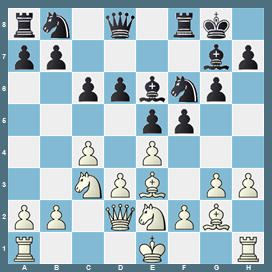
The process of gaining, maintaining and increasing the advantage was gradual and implied many fine positional decisions.
Many great champions used positional sacrifices as an important weapon in their arsenals. In Kasparov's games, we frequently encounter such sacrifices, the meaning of which stays beyond common sense.
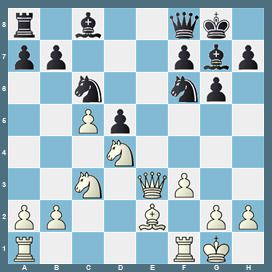
This tabyia was known since an earlier game Karpov-Kasparov. In Gelfand,B - Kasparov,G 0-1, it hardly came as a surprise for Boris, who even delivered a novelty on the next move. The position is very difficult, though and one should enter it (with either colour) only if one understand it well.
I have included only two games of Kasparov in this database, because there will be other games of his examined in the accompanying videos.
B) Karpov
A whole generation of talented young players emerged on the top tournament scene. Some of them had learned from Kasparov's attacking and dynamic games, while others grew with Karpov's positional games as a model. One thing remained hard to learn, though. Karpov's ability to maintain the tension and the fluency of his play in objectively equal positions was hard to imitate. Karpov,A - Salov,V 1-0 is a good example.
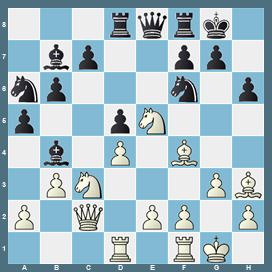
The first few tests are meant to ask you to find a typical "Karpov moves", which far from offering an advantage, prevent Black from getting his own play going. At a later stage, after Black's first mistake, the task will be to find the best ways of maintaining and increasing White's advantage.
Karpov used to gladly play the structure featured by the previous game with either colour. Compare with the position after the opening in Beliavsky,A - Karpov,A 0-1.
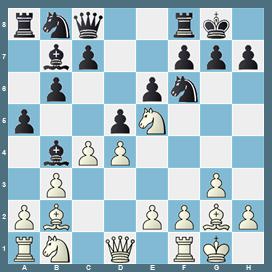
Karpov soon took over the initiative with a series of fine moves, in the best hypermodern spirit. Later he played a slow move, after which White could have held his own. There are many interesting moments in the lines given by Karpov or analysed by myself.
Offering Karpov a positional advantage is the least recommendable thing to do.
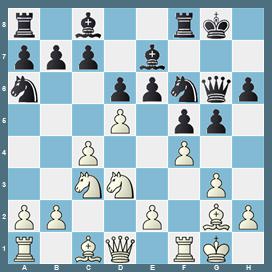
Nigel was far from his best shape, but in Karpov,A - Short,N 1-0 he treated the opening really poorly. Karpov took a series of interesting positional decisions, but almost stumbled in a winning position.
C) Timman
I perceive Jan Timman as a very colourful player. Gifted with a fine positional understanding and intuitive tactical skills, he used to be inclined towards improvising, both in the opening and in the middlegame. The latter aspect may explain why his results were fluctuant even in his best years.
From a sporty point of view, his result in Linares 1992 was a success, but several of his important wins were only partly convincing. He played quite a few positionally fine sequences, but his adventurous spirit eventually caused him to go astray later. However, the problems he faced his opponents with caused them to enter in time trouble, during which they committed decisive mistakes. This game Timman,J - Karpov,A 1-0, played against the man who at some point seemed to be an eternal number two in the World is a good example.
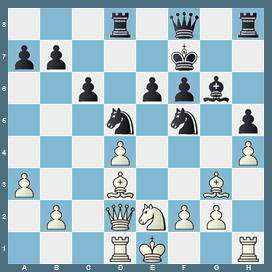
In several moments of the next phase, Timman played in Karpov's style (kindly compare with Karpov-Salov). Even though the position will remain close to equal, he will know how to maintain the latent pressure. The decisive events took place in mutual time trouble, though.
Timman's attempt to emulate Karpov's style sometimes did a bad service to him. This was the case in Timman,J - Speelman,J 1-0.
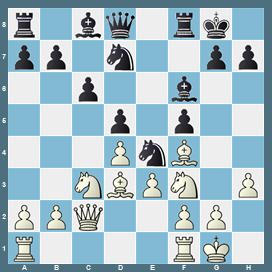
Strong and subtle moves alternated with bad ones, but time trouble was there to ensure a happy end for the Dutch grandmaster.
D) The new generation
It is not easy to describe Ivanchuk's style. Perhaps the best-suited term is "universal". The most typical trait of his play is the maximalism, though. Many of the very strong players have a practical approach. They seldom play bad moves but do not mind playing second-best moves sometimes, especially when this spares them time and energy. This is not Ivanchuk's case, though. Always in deep concentration, no matter whether his eyes were examining the chess board or the ceiling, he would try to find the very best move. While this is laudable from a scientific and artistic point of view, it has the practical drawback of causing frequent time troubles.
Even though Ivanchuk,V - Gelfand,B 1-0 is not without flaws, his comments highlight his attention to the tiniest details.

The 9.Nd2 system had its times of glory in those years, but theory was advancing at "analogic" speed since the engines did not exist yet. This game provided certain essential elements for the general theory of the structure.
Speelman,J - Ivanchuk,V 0-1 is another fine game of the runner-up.
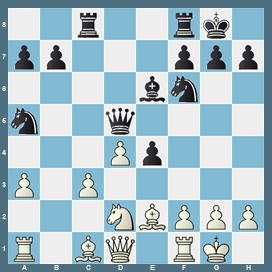
Ivanchuk's flexibility of thinking and alertness to the tiniest positional details is impressive.
As I write these lines, Anand is acting as a commentator for the World Rapid and Blitz championships. Even though he is less active as a player nowadays, his quickness of thinking and spotting subtle nuances are stunning.
Back in 1992, he was a rapidly rising star. He used to be very quick in those days, too. Sometimes too quick, many said. Indeed, the ease with which he delivered excellent moves was accompanied by occasional superficiality.
In Anand,V - Timman,J 1-0, he took advantage of Timman's pieces' exposure, displaying fine positional feeling.
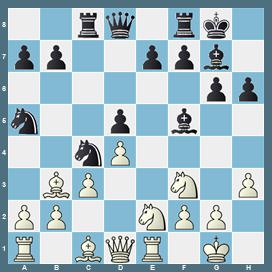
lack is doing fine in this position, but the piece tension and the bishop's exposure on f5 make the game complicated.
Salov used to be a fine positional player, who excelled in static play. Even in completely equal positions, where others might have agreed to a draw, he knew how to generate winning chances with endless manoeuvres, which apparently did not change much in the character of the position. His result in Linares 1992 was satisfactory, but I failed to find games with perfect sequences. Nevertheless, his and my comments on the two examples I chose for this column highlight important aspects of the respective typical structures.
In Salov,V - Short,N 1-0, we have the Carlsbad structure on the board.
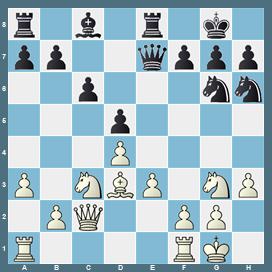
Typically, White should prepare the minority's attack with b4-b5 or find a favourable moment for opening the centre with e3-e4. Given the fact that several black pieces are targeting the white kingside, White needs to pay attention to the opponent's attacking chances, mainly based on a sacrifice on h3.
Perhaps Salov,V - Ljubojevic,L 1-0 is the most typical for Salov's static style.
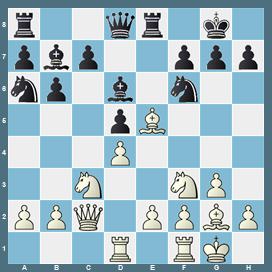
We notice that just like Karpov, Salov did not have anything against playing this structure with either colour. However, his style will be noticeably different from Karpov's.